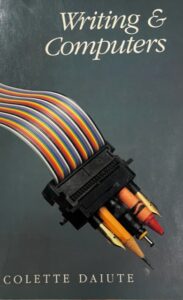At the beginning of the semester, during introductions, I usually hand out a letter I’ve written to the students, describing the writing course and my goals in designing it, what I’m excited for, what I promise to do to support them as they learn, and I read it aloud, word for word. (“If I’m going to talk the talk, I need to walk the walk,” I will tell them, reciting from the letter. “If I’m getting paid to teach you writing, it makes sense that I share my writing with you.”) In the letters they write back to me by the end of that class, students often express surprise about the ways in which my letter didn’t sound “like writing,” but like a person talking. This becomes a point of departure to explore genre and audience expectation: If all texts are written by people, to people, why should some writing hide the fact? What about the syntax, punctuation, or diction might make a passage sound more spoken or more written?
Because writing often evolves in startling and unexpected ways, my teaching plans must engage students in acts of writing, and must be flexible enough to notice and respond to teachable moments as they arise. Active listening – saying back what I understand as the heart of what’s been said, in a tone of curiosity or uncertainty (a …?) – is a core practice that I use in a variety of contexts to guide students to the edge of their understanding, and which I encourage students to practice in responding to each other. In response to a memory they are rendering on the page, active listening can help students see where they’ve merely implied what actually happened, and where there’s room – and audience interest – to expand or deepen their description. In response to a research project, it can help both students and me learn more about sources’ arguments and rhetorical aims, not only articulating and clarifying what is known, but also, through repeated queries, reaching toward new connections.
My lesson plans often involve having students bring in some writing they’ve prepared at home, and then engaging in some solo work on it that prepares them for a second task they will engage in as part of a stable working group. For example, students might bring in a list of questions raised by a text they’ve read, and spend 5 minutes sorting the questions according to how they might be answered (e.g. by close reading, by factual research, by extended reasoning); in groups, they can then work together to answer the most immediately solvable questions, and identify questions that could seed a successful essay. During the solo portion, I participate in the same task whenever possible: not only does it aid in adjusting my timing, but I want to signal that I value the work, and since I do value the work, I also want to benefit from it myself. During the group portion, I float from group to group, listening for opportunities to advise, adjust, and make connections. As more than one faculty observer has noted when visiting my class, this approach allows me to fit in a great deal of teaching, at moments when individual students are primed for it, in relatively small amounts of time.
When, as often happens, someone has not done the homework, I try to prepare an alternate activity for the first ten minutes of class that will enable participation in the group; and because some individuals and some groups work more quickly than others, I prepare an extension activity if they finish. The idea in both cases is to counter a possible misperception that what I’m assigning is The Way to Learn to Write. There is always more to learn, and more to do. Similarly, I always try to let students know why I am assigning the work I assign – including the caveats that there is always more than one reason (we don’t have time in a 15-week semester for single-reason activities), and that one recurring reason for my writing exercises is to generate surprising outcomes. If they can find another good way to achieve the goals I’ve laid out, I’m happy to learn from them, and possibly to incorporate it into the next revision of that lesson plan.
A specific way I try to make my goals explicit is through the course site, where I post my lesson plans and assignments, projecting them on an overhead screen to discuss and field questions. Publicly sharing what I hope to achieve helps me and the students to be aware of how much we must get through, and challenges us: if we do make a change, it must be justifiable. The site also emphasizes the ways in which our writing projects are interlinked: first with planned hyperlinks between pages, then with stored and comparable revision histories of pieces the students shape over time, and finally with searchable tags that students add in preparation for their final reflections.
Perhaps most importantly, at the core of my teaching philosophy is an awareness that building expertise involves a shift in perception: where the novice sees isolated acts and instructions, the expert sees purposeful patterns. Composition and rhetoric has given me a vocabulary that guides my choices and attention, and one of my roles as a teacher is to share that vocabulary and what it helps us see. But all of us, as learners, can reflect back and name to each other the patterns we notice in reading and in writing, in processes and products, so we might notice differently next time.






